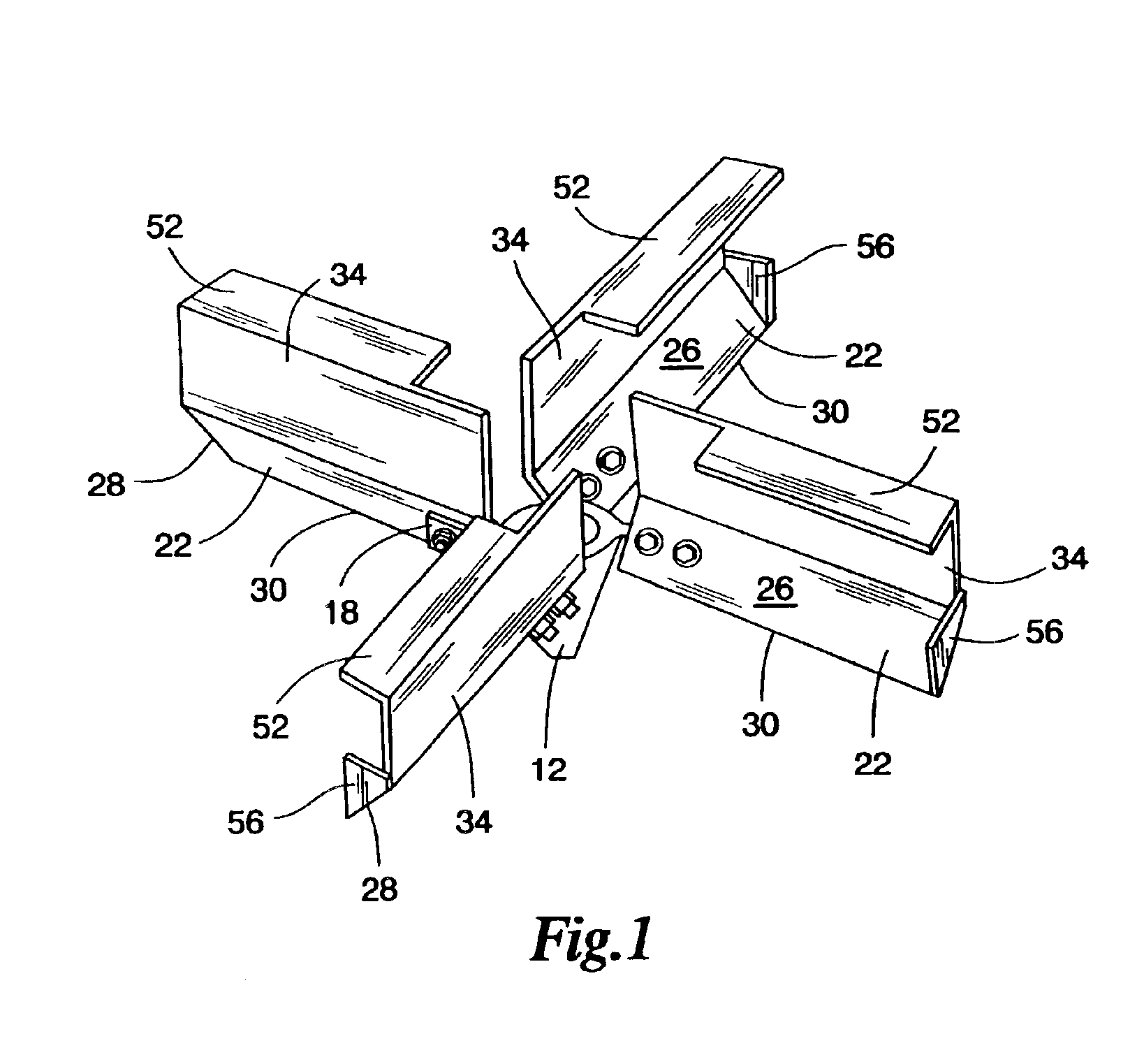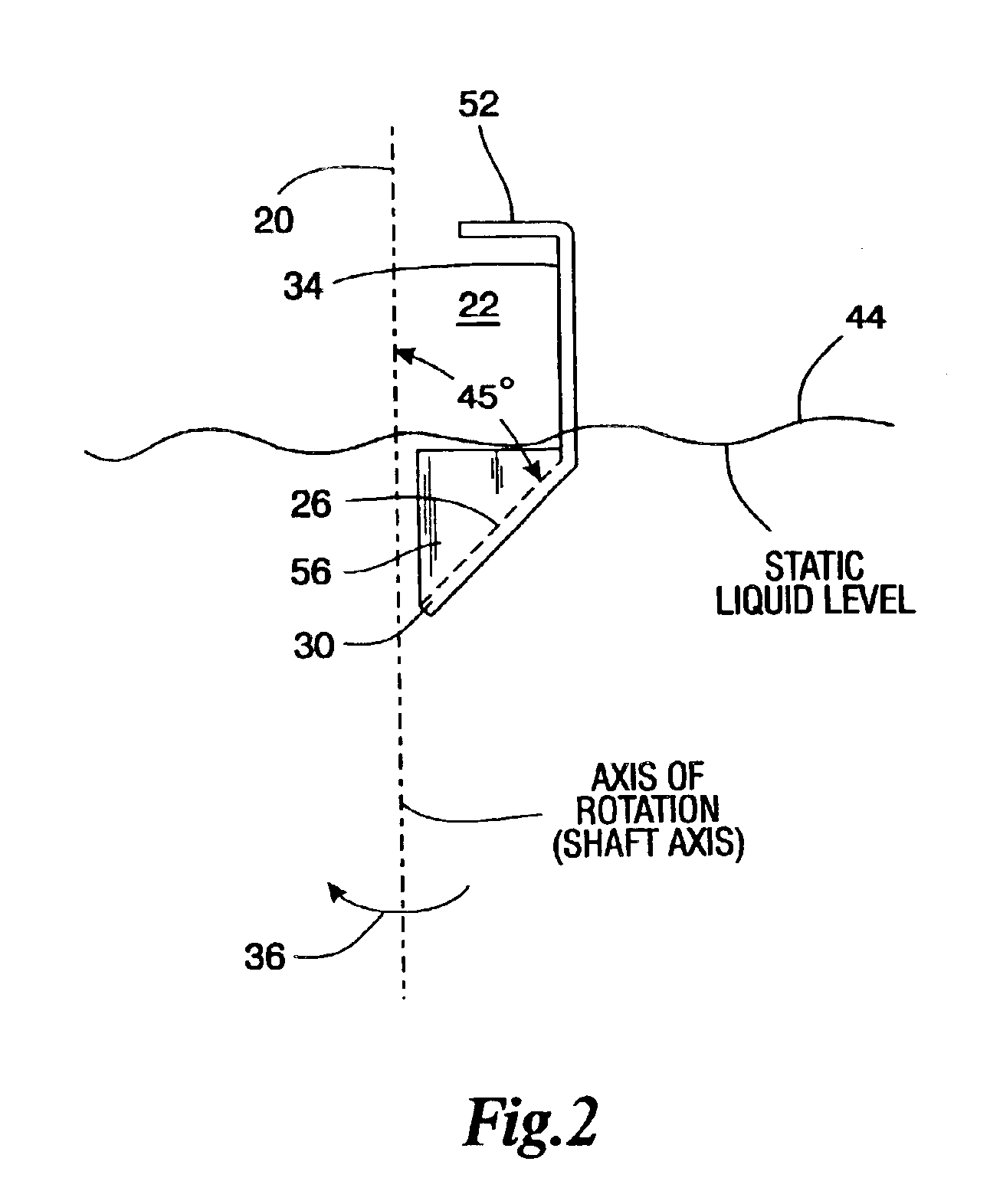Surface aeration impellers
a surface aeration and impeller technology, applied in the direction of liquid fuel engines, marine propulsion, vessel construction, etc., can solve the problems of insufficient understanding of the fundamental mass transfer mechanism and fluid dynamics of surface aeration, insufficient oxygen mass transfer analysis of current state-of-the-art surface aerator oxygen mass transfer analysis, and obvious limitation of solid suspension, so as to improve gas entrainment and oxygen transfer, the effect of efficient spraying liquid
- Summary
- Abstract
- Description
- Claims
- Application Information
AI Technical Summary
Benefits of technology
Problems solved by technology
Method used
Image
Examples
Embodiment Construction
[0026]Referring to FIGS. 1-4 there is shown a shaft 10 having a hub 12 attached thereto by set screws and a key. The hub therefore rotates with the shaft. The hub has four arms 18 which are tilted at an angle (45°) with respect to the axis of rotation 20. Four blades 22 are attached to the arms 18 by groups of bolts and nuts. The number of bolts and nuts in the group depends upon the dimensions of the impeller. Other attachment means, such as weldments may be used for attaching the blades 22 to the hub 12.
[0027]The blades have lower portions 26 which are preferably rectangular plates having an outer edge 28 at the radially outward ends of the blades between the generally radially extending edge 30 and the generally radially extending joint between the lower portion 26 and the upper portion 34. The blade outer edges 28 are at 45° with respect to the shaft axis 20 in this example. However, this angle can be in the range of about 30° to 60° preferably about 40° to 50° and most preferab...
PUM
| Property | Measurement | Unit |
|---|---|---|
| angle | aaaaa | aaaaa |
| angle | aaaaa | aaaaa |
| chord angle | aaaaa | aaaaa |
Abstract
Description
Claims
Application Information
 Login to View More
Login to View More - R&D
- Intellectual Property
- Life Sciences
- Materials
- Tech Scout
- Unparalleled Data Quality
- Higher Quality Content
- 60% Fewer Hallucinations
Browse by: Latest US Patents, China's latest patents, Technical Efficacy Thesaurus, Application Domain, Technology Topic, Popular Technical Reports.
© 2025 PatSnap. All rights reserved.Legal|Privacy policy|Modern Slavery Act Transparency Statement|Sitemap|About US| Contact US: help@patsnap.com



